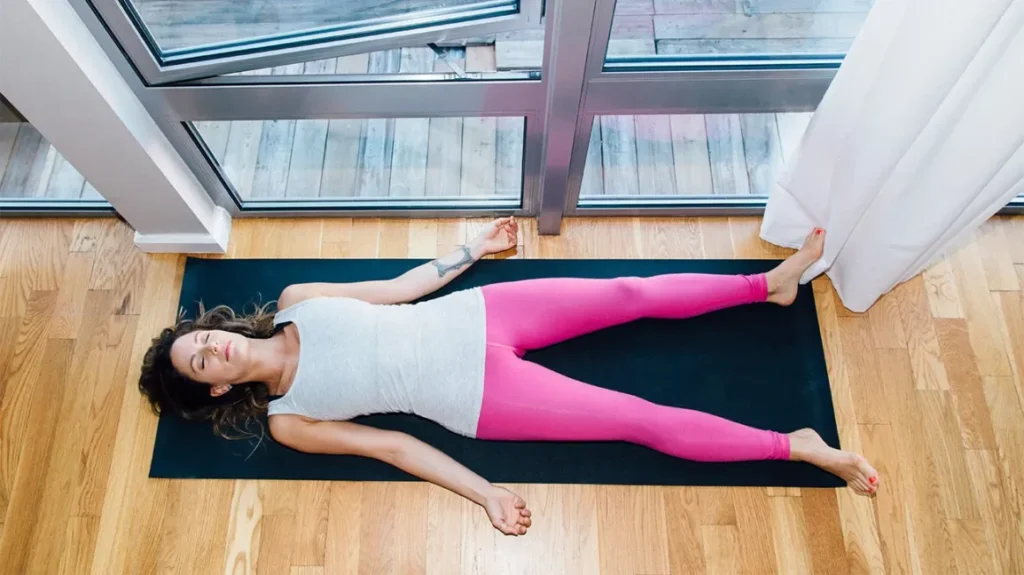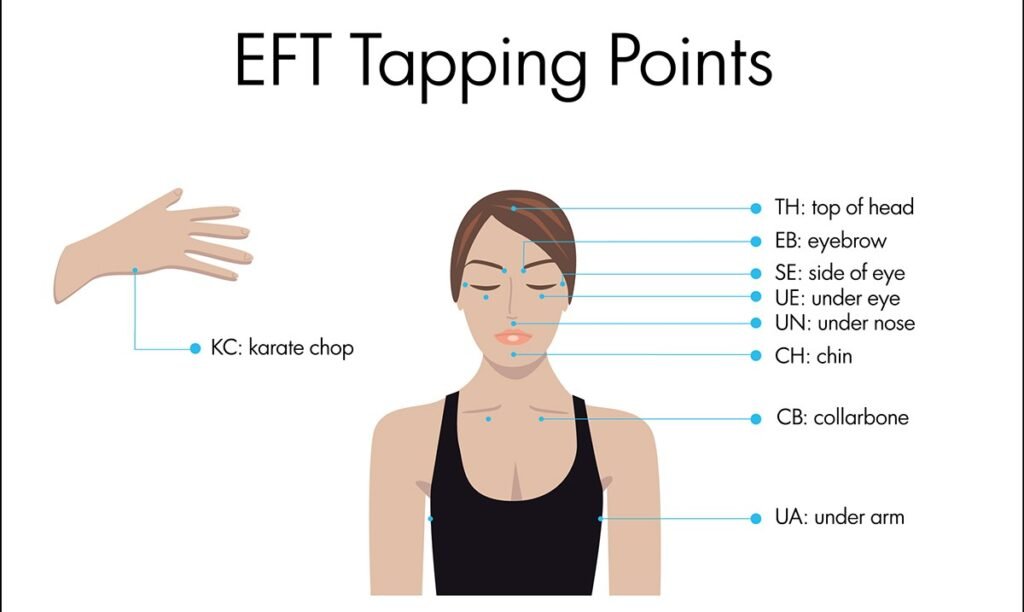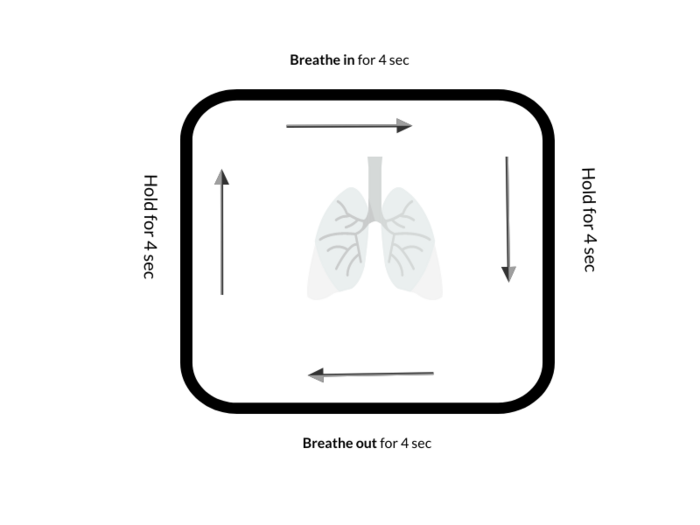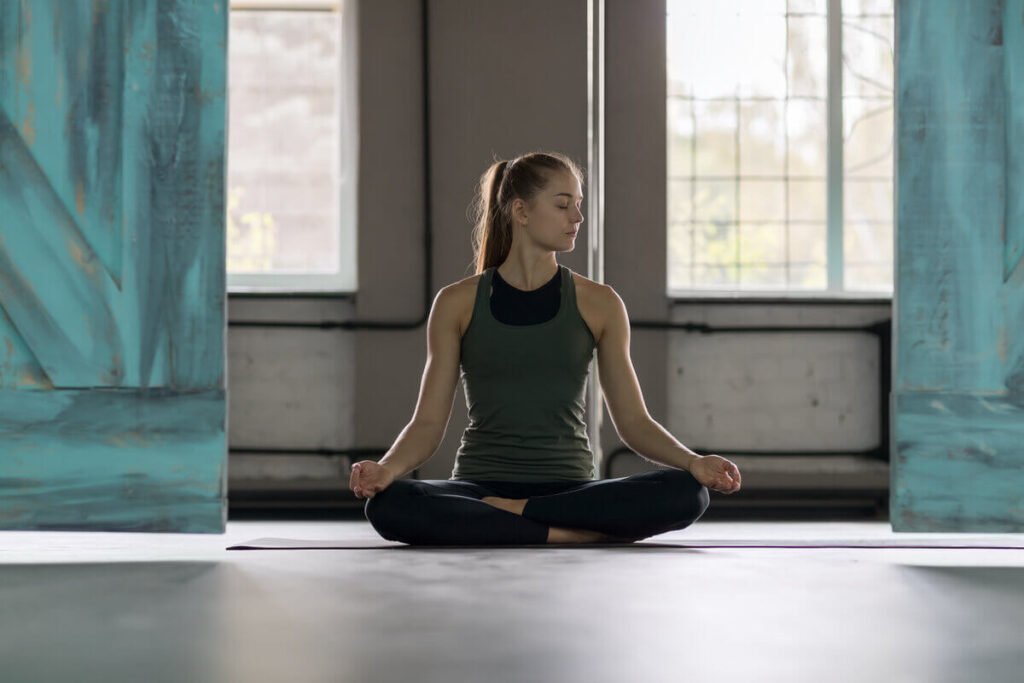I have long wanted to talk about evidence-based techniques for mental health. I am extremely glad that such methods exist and already have a scientific basis – this is the beginning of something big. We begin to understand on all levels that we are whole beings, not divided into components — body, mind, or soul. We are complex, but we are one, and we need a holistic approach that takes this complexity into account. Below is an overview of the main techniques for a general idea and to understand which of these may be useful for you.
How the nervous system works
To begin with, let’s remind ourselves how the nervous system works.

The nervous system consists of two main parts: the central nervous system (CNS) and the peripheral nervous system (PNS).
- Central nervous system (CNS):
- Includes brain and spinal cord.
- The brain processes information, coordinates actions, and is responsible for consciousness, memory, thinking, and emotions.
- The spinal cord transmits information between the brain and the rest of the body and is also responsible for reflex actions.
- Peripheral nervous system (PNS):
- Includes all nerves that come from the central nervous system and is divided into two main subsystems:
- Somatic Nervous System: Responsible for controlling the muscles we can consciously control and for transmitting sensory signals to the CNS.
- Autonomic nervous system (ANS): controls unconscious functions; divided into sympathetic and parasympathetic systems.
- Includes all nerves that come from the central nervous system and is divided into two main subsystems:
Together, these systems work to ensure communication between different parts of the body and regulate physiological processes.
The autonomic nervous system (ANS) is the part of the nervous system that controls the body’s unconscious functions, such as breathing, heartbeat, digestion, and blood circulation. It regulates the activity of internal organs and ensures the maintenance of homeostasis, that is, the stability of the internal environment.
ANS is divided into two main parts:
- Sympathetic Nervous System: Activated in stressful situations and responsible for the fight/flight/freeze response. It increases the heartbeat, expands the bronchi, reduces the activity of the digestive system, so that the body can respond to threats faster.
- Parasympathetic nervous system: responsible for “rest and digestion”. It lowers heart rate, stimulates digestion and reduces stress, helping the body to recover.
Together, these two systems work to maintain balance in the body by responding to internal and external changes. For example, during stress, the sympathetic system is activated, and after recovery, the parasympathetic system is activated, which allows the body to return to a calm state.
The main purpose of most of the techniques below is precisely to help learn how to effectively switch from sympathetic to parasympathetic, as well as to help the parasympathetic nervous system deal with, in particular, accumulated emotions and traumas that may be ‘stuck’ in our mind or body.
“Home” techniques
In this section, we will focus on self-help techniques that can be used safely on your own without the supervision of a therapist.
Body scan meditation
Body scan meditation is a mindfulness practice that involves slowly focusing on each part of the body, promoting self-awareness and relieving tension or discomfort. During this meditation, a person finds a comfortable position and gradually shifts attention from one part of the body to another, starting, for example, with the toes and ending with the head. It is most convenient to do such meditations with a voice recording (guided meditation). I like the free Medito app, it’s in English.
Research shows that mindfulness practices, particularly body scanning, have beneficial effects on depression, anxiety, stress, insomnia, addiction, psychosis, pain, hypertension, weight management, cancer-related symptoms, and prosocial behavior.
This technique helps you feel more in touch with your body, reducing stress and developing the skill of recognizing and releasing physical tension. It contributes to a deeper understanding of one’s own needs and boundaries, and also develops the ability to be “here and now”.

Tapping (EFT): emotional acupressure
Tapping, or EFT, combines elements of exposure therapy and cognitive restructuring with acupressure. By tapping certain points on the body, we release stuck emotions (energy, trauma). Trauma is essentially undigested information, and tapping and the other techniques below help to digest it.
Studies show that EFT has measurable biological effects, such as changes in gene expression, synchronization of brain processes, correction of hormone synthesis, and effects on a wide range of biomarkers. This means that the effects of therapy can be recorded at the physiological level. Clinical EFT is a mature and stable method, with a large amount of scientific evidence in its favor.
EFT works by interrupting the brain’s conditioned response to stress and creating new neural pathways that promote relaxation and reduced anxiety.

Weighted blanket
A weighted blanket provides deep pressure stimulation that calms the nervous system and promotes relaxation. Pressotherapy works on the same principle, although it has a much smaller evidence base.
A meta-analysis of studies shows that using a weighted blanket can reduce anxiety levels and promote better sleep.
The soft pressure created by a heavy blanket simulates a soothing hug, activating the parasympathetic nervous system. This helps to relieve muscle tension, calms the heartbeat and generally promotes deeper relaxation.
How to choose a weighted blanket?
“Scientifically proven” blankets differ from ordinary heavy blankets by the filler – usually glass balls, which contribute to the even distribution of weight and actually control this weight. For an adult, the weight of the blanket should be 10-12% of the body weight, and for a child – 5-7%. It is also important to pay attention to whether the blanket can be washed and whether it has quilted (in non-quilted blankets, the weight is distributed unevenly).
Progressive muscle relaxation (PMR)
PMR (Progressive Muscle Relaxation) is a technique that involves systematically tensing and then relaxing various muscle groups to relieve physical tension and promote psychological calm. Usually, the technique begins with a few deep breaths to prepare for relaxation. Then muscle groups (for example, arms, legs, neck) are strained in turn, usually for 5-10 seconds. After tension, the muscles relax sharply, which helps to feel the difference between tension and relaxation. This process is repeated for all major muscle groups, starting with the legs and ending with the head or vice versa. The technique is also often recommended for overcoming aggression and anger.
The reduction of stress and relaxation with the help of the method of progressive muscle relaxation has scientific support. Research also confirms a positive effect on reducing neck and back pain, systolic pressure, and the frequency of migraines.
Somatic experience
Somatic experiencing is a body-centered therapy that aims to release stored trauma through awareness of physical sensations in the body. Soma – from the Greek – body, – the practice is based on the idea that the reactions and sensations of the body testify to internal experiences, and through the body you can work with them.
Independent practice looks about like this: find a comfortable place and start with deep breathing. Focus on bodily sensations, noticing any tension or discomfort. Carefully listen to what it is, perhaps some traumatic memory will arise. Switch attention between an uncomfortable feeling and a feeling of security. Allow the body to relieve tension with light movements or deep breathing. You can also “breathe into the place of discomfort.” Acknowledge your feelings and progress. This is just one example of such self-therapy, because it can also include sitting by the lake, for example, – this is an example of external somatic experience.
There is also the concept of somatic yoga, which means not just performing asanas, but subtly listening to yourself in the process.
Studies confirm the effectiveness of somatic therapy in working with trauma and PTSD.
Breathing practices
There are many effective breathing practices, and this deserves a separate article, if not an entire course. In yoga, there is a separate branch dedicated to breathing practices for various purposes – pranayama.
But here are some well-known evidence practices:
- Diaphragmatic Breathing: Using the diaphragm for deeper inhalation and exhalation. I wrote about this incredibly important breath here.
- Coherent Breathing: Inhaling and exhaling at a rate of five (for example) breaths per minute (about six seconds per breath), which promotes a sense of calm and balance in the autonomic nervous system; for convenience can be combined with special music.
- Holotropic Breathing: The method combines accelerated breathing with music to achieve altered states of consciousness.
- Transformational Breathing: This practice synchronizes breath control with sound and movement, encouraging emotional release and self-awareness.
- Square breathing: Inhaling, holding, exhaling and re-holding for an equal count; the technique is often used by athletes and the military for concentration and stress reduction.

Breathing affects the autonomic nervous system, helping to shift from a stress response (sympathetic) to a relaxation response (parasympathetic). This transition can reduce anxiety, improve emotional regulation, and improve mental clarity. For example, coherent breathing stabilizes heart rate variability, which is associated with improved emotional stability.
Science is just beginning to seriously step into this field, and research is not enough. Each practice requires separate studies. In general, there are studies showing that breathing practices have a positive effect on physical and mental health and well-being. Here, for example, is the conclusion of a study on pranayama: the available evidence on pranayama points to physiological and psychological benefits. The beneficial effect prevails in patients with diseases of the respiratory tract, such as bronchial asthma. It also helps patients with cancer and cardiovascular diseases. However, further high-quality randomized trials are needed to provide definitive evidence.
Mindfulness-Based Stress Reduction (MBSR)
This eight-week program was developed by John Kabat-Zinn in 1979 and uses mindfulness practices to reduce stress, anxiety and depression. MBSR combines elements of meditation, yoga, and mindful breathing, allowing participants to develop awareness and acceptance of their thoughts and feelings.
When doing the MBSR program on your own, you can start with mindfulness meditation, focusing on breathing, then move on to studying the body, becoming aware of the sensations in its various parts. Perform simple yoga poses, paying attention to movements and breathing. Try also to be aware during our daily routines. Finally, you can write down your thoughts and feelings in a journal. Regular practice can reduce stress levels and improve overall well-being.
A scientific review shows that MBSR is effective in reducing anxiety, depression, and stress, as well as increasing mindfulness and self-compassion. MBSR trains the brain to be present, breaking the cycle of stress and worry.
Guided imagery
Guided imagery means imagining calming or positive scenarios that promote relaxation and emotional healing. Because, as my therapist says, the brain doesn’t see the difference between real and imagined, in the same way you can imagine smashing something to release anger.
Studies have shown that guided imagery reduces anxiety and pain, especially in patients undergoing medical treatment. The technique helps to shift attention from stressful factors and create a calming mental space.

Cold therapy (Wim Hof method)
Cold exposure combined with controlled breathing helps develop mental and physical resilience.
Studies have shown that this method strengthens the immune system, reduces inflammation and improves mental focus. Cold exposure activates the vagus nerve and increases stress resistance, contributing to a feeling of clarity and vigor.
By the way, Goethe often wrote while immersing his feet in cold water.

Vagus Nerve Stimulation, VNS
The vagus nerve is part of the parasympathetic nervous system, which is responsible for relaxation and reducing the stress response. It extends from the brain to the organs in the thoracic and abdominal cavities, which gives it the ability to influence many physiological processes. Many of the techniques mentioned in this article involve this nerve.
- Deep Breathing: When we breathe slowly and deeply, the diaphragm is activated, which helps lower the heart rate and stimulates the vagus nerve. Diaphragmatic breathing sends signals to the brain that are perceived as a sign of calmness, which lowers cortisol levels and promotes relaxation.
- Exposure to cold: Touching the face with cold water or even briefly submerging the face can trigger the so-called “submersion reflex,” which triggers the body’s parasympathetic response. This reflex activates the vagus nerve, helping to slow the heart rate, which helps to calm down.
- Humming or singing: Vibrations created by low-frequency sounds such as “mmmm” or singing stimulate the vagus nerve by interacting with the vocal cords. This increases the activity of the parasympathetic system, which allows the body to enter a state of relaxation and reduces the physiological response to stress. Even the well-known from childhood “gargle” stimulates this nerve.
- Exercise: For example, slow head rotations from side to side also stimulate the vagus nerve as the nerve passes through the neck. While sitting or standing straight, slowly turn your head to the left, keeping your gaze over your left shoulder for 3-5 seconds. Return to the center and then do the same to the right. Repeat several times. But carefully, slowly) Swimming also stimulates this nerve: there is breathing, and aerobic exercises, and cold water, and rhythm!
- Progressive Muscle Relaxation: The gradual tensing and relaxing of different muscle groups as described above.
- Massage: Light self-massage of the neck or behind the ears can stimulate the vagus nerve, improving circulation and activating the parasympathetic response. Gently press and massage this area for 2-3 minutes to relieve tension and improve general condition.
Clinical treatment: For some complex conditions, such as epilepsy or resistant depression, an implantable device is used to stimulate the vagus nerve with electrical impulses. However, this method requires serious medical supervision and has a number of contraindications, such as pregnancy or certain heart diseases.
Journaling
Keeping a diary allows you to express your thoughts and emotions on paper, helping you process difficult experiences and reduce emotional stress.
Studies of expressive writing have shown improved emotional clarity and reduced symptoms of anxiety, depression, and trauma. This technique helps to gain perspective and experience or accept unlived feelings, leading to emotional cleansing. Below – more about diaries and similar creative techniques.
NeuroYoga
Neuroyoga is an innovative approach that combines traditional yoga practices with modern principles of neuroscience, creating a new method to support mental health and improve cognitive function. This practice is especially beneficial for those seeking to optimize brain function, improve emotional resilience, and achieve greater concentration.
Recent studies show that certain movements, breathing techniques and meditation can activate areas of the brain associated with emotional regulation, memory and learning. In particular, it has been proven that meditative techniques stimulate activity in the prefrontal cortex, the area of the brain responsible for cognitive control and decision-making. Physical postures and conscious breathing also contribute to the improvement of neuroplasticity, that is, the ability of the brain to adapt and create new neural connections.

Techniques that require a therapist
In this section, we will talk about methods that require therapeutic supervision: brainspotting and EMDR. An auxiliary tool, bilateral stimulation, which is often used in the application of brainspotting, EMDR and other therapeutic methods, can be used for neuroregulation independently. In particular, people (especially with ADHD) report a positive effect of independent use of bilateral music for relaxation and stress reduction, although official evidence of this is still lacking.
As already mentioned, trauma is essentially information that a person could not digest. Brainspotting and EMDR help the brain digest it, even if the person does not remember exactly what happened. In my opinion, this is phenomenal.
Brainspotting
Brainspotting is a mind-body therapy that helps you access, process and release traumatic memories. The method is based on focusing on certain positions of the eyes that correspond to the areas of the brain where the trauma persists.
A brainspotting session takes place in a safe atmosphere, where a person focuses on a traumatic event, focusing on certain eye positions with the help of a therapist’s pointer. Well, or a finger) This activates emotions and memories, allowing more effective processing of trauma and improving the mental state of a person.
A 2022 study found that brainspotting significantly reduced PTSD symptoms by activating subcortical areas of the brain involved in emotional processing. This therapy allows for deep healing by accessing parts of the brain that are often inaccessible through traditional talk therapy.
Brainspotting is recommended to be combined with talk therapy, where, however, it is possible to completely avoid talking about the traumatic event, focusing on reflection around sensations and insights.
Eye Movement Desensitization and Reprocessing (EMDR)
EMDR is a recognized trauma therapy that uses guided eye movements to help people process traumatic memories and reduce their emotional intensity.
EMDR (Eye Movement Desensitization and Reprocessing) is one of the most researched therapies for treating trauma. This method has received approval from the American Psychological Association and the World Health Organization for its effectiveness in the treatment of post-traumatic stress disorder (PTSD). By engaging both hemispheres of the brain, EMDR allows difficult memories to be reprocessed without being overwhelmed by them, promoting healing.
Bilateral stimulation
Bilateral stimulation (BS) is used in various therapeutic practices, including EMDR, brainspotting, CBT (cognitive behavioral therapy), trauma therapy, art therapy, and DPT (dialectical behavior therapy).
There are different forms of bilateral stimulation:
- Eye Movement: The most famous form used in EMDR, where the client follows the therapist’s hand movements.
- Tactile stimulation: Touches or light strokes on both arms or legs alternating to activate sensations.
- Sound stimulation: Using sound signals that alternate between the left and right ears, usually through headphones.
- Visual stimulation: Visual elements that move from side to side, such as animations or slides.
- Bilateral music: Using music that has alternating sounds from the left and right channels to provide stimulation.
- Bilateral Tactile Stimulation: Using materials or devices that create alternating sensations between two sides of the body, such as special massagers.
- Bilateral Walking: A walk in which a person alternates arm movements or uses paths that alternate between left and right sides.
- Bilateral Play Therapy: Games or activities that involve alternating movements between the left and right sides of the body.
These forms of bilateral stimulation can be used in various therapeutic practices to facilitate the processing of traumatic memories and emotional release.
And psychotherapy. Psychotherapy is a broader concept than “technique”, there are many proven methods, and in the following articles I will delve into it with pleasure. Let’s take care of mental health, because the quality of life is based on it.



